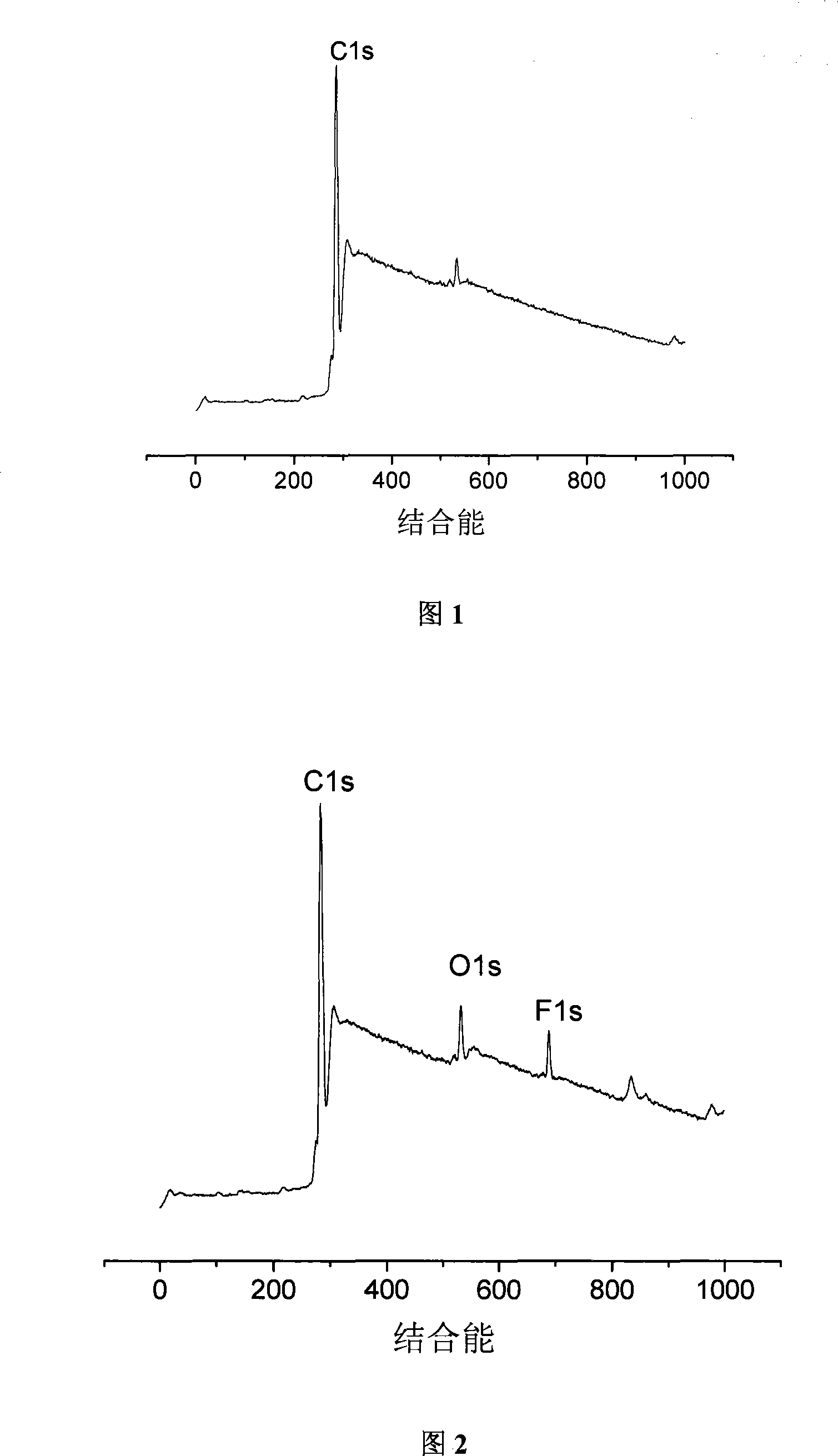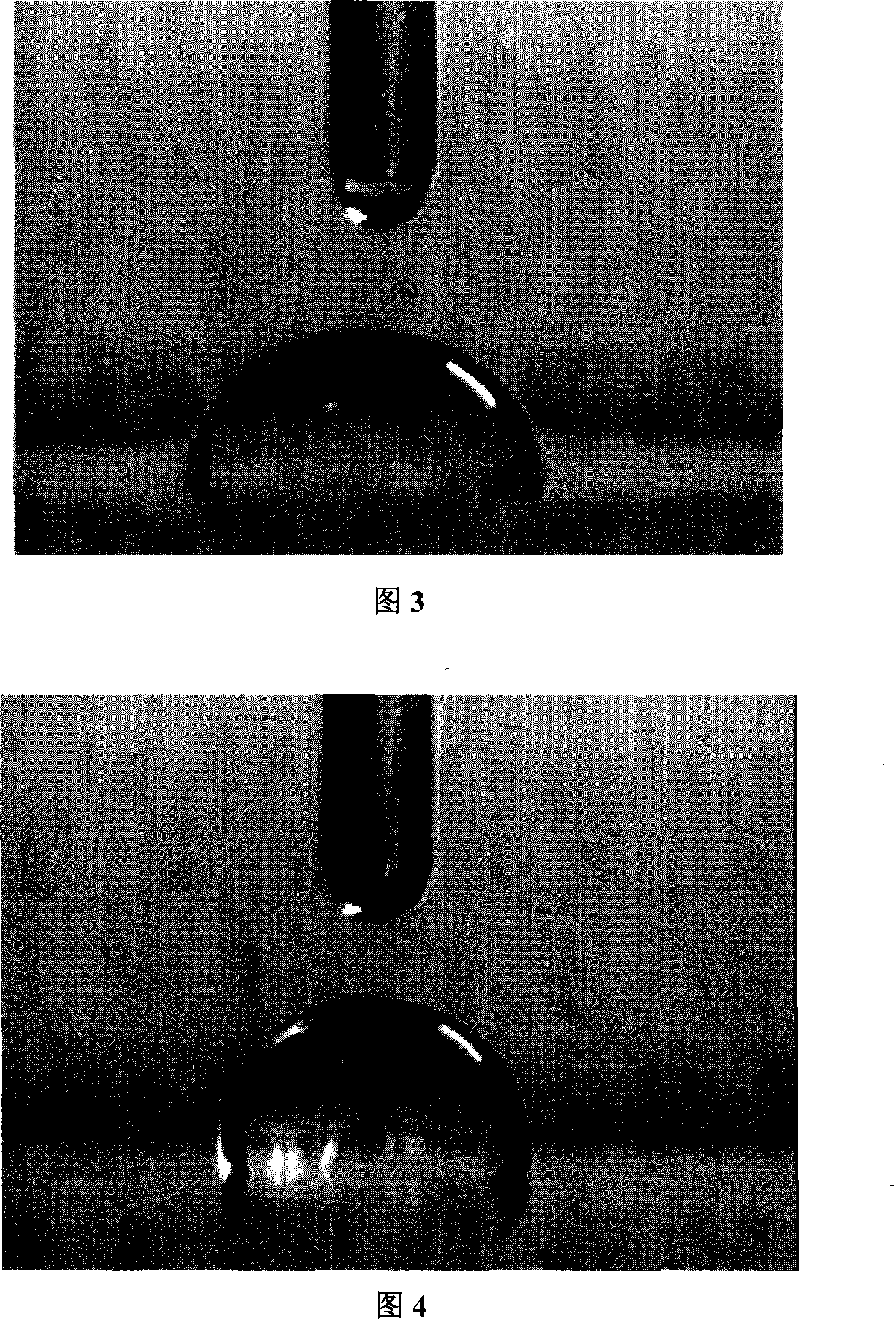Polypropylene material with low surface tension and method for preparing the same
A technology of polypropylene material and low surface tension, which is applied in the field of graft modified polypropylene material and its preparation, low surface tension polypropylene material and its preparation, to achieve the improvement of monomer grafting rate, elimination of radiation pollution, surface energy Reduced effect
- Summary
- Abstract
- Description
- Claims
- Application Information
AI Technical Summary
Problems solved by technology
Method used
Image
Examples
Embodiment 1
[0030] By weight, the proportions of the components for preparing the low surface tension polypropylene material are:
[0031] Polypropylene: 100 parts
[0032] Fluorinated graft monomer dodecafluoroheptyl methacrylate: 5 parts
[0033] Grafted comonomer styrene: 3 parts
[0034] Initiator dicumyl peroxide: 0.8 parts
[0035] Antioxidant tetrakis[β-(3,5-di-tert-butyl-4-hydroxyphenyl) propionate] pentaerythritol ester (1010): 0.4 parts
[0036] Antioxidant tris(2,4-di-tert-butylphenyl)phosphite (168): 0.4 parts
[0037] The preparation process is as follows:
[0038] Mix dodecafluoroheptyl methacrylate, styrene, dicumyl peroxide, antioxidant 1010, and antioxidant 168 according to the ratio of the above components, and then add the mixed system to 100 parts of dry polypropylene After adding conventional additives for conventional processing, use a high-speed mixer to mix evenly.
[0039] The above-mentioned mixed material is extruded with a 9-stage heated twin-screw extruder...
Embodiment 2
[0046] The ratio of each component to prepare the low surface tension polypropylene material of this embodiment is by weight:
[0047] Polypropylene: 100 parts
[0048] Fluorinated graft monomer dodecafluoroheptyl acrylate: 8 parts
[0049] Grafted comonomer styrene: 3 parts
[0050] Initiator dicumyl peroxide: 1.0 parts
[0051] Antioxidant tetrakis[β-(3,5-di-tert-butyl-4-hydroxyphenyl) propionate] pentaerythritol ester (1010): 0.2 parts
[0052] Dilauryl Thiodipropionate (DLTP): 0.4 parts
[0053] Each component of the above ratio is prepared according to the preparation method of Example 1 to obtain a pellet product. After drying, it is injected or pressed into a sample to measure its performance, and its water resistance and its water resistance are characterized by the method of contact angle to water. Surface tension, Table 2 is the comparison between the material (grafted PP) and pure polypropylene products (pure PP).
[0054] Table 2
[0055]
Embodiment 3
[0057] The ratio of each component to prepare the low surface tension polypropylene material of this embodiment is by weight:
[0058] Polypropylene: 100 parts
[0059] Fluorinated graft monomer dodecafluoroheptyl acrylate: 11 parts
[0060] Grafted comonomer styrene: 3 parts
[0061] Initiator benzoyl peroxide: 0.8 parts
[0062] Antioxidant tetrakis[β-(3,5-di-tert-butyl-4-hydroxyphenyl) propionate] pentaerythritol ester (1010): 0.5 parts
[0063] Antioxidant tris(2,4-di-tert-butylphenyl)phosphite (168): 0.3 parts
[0064] Each component of the above ratio is prepared according to the preparation method of Example 1 to obtain a pellet product. After drying, it is injected or pressed into a sample to measure its performance, and its water resistance and its water resistance are characterized by the method of contact angle to water. Surface tension, Table 3 is a comparison of the properties of the obtained material (grafted PP) and pure polypropylene products (pure PP).
...
PUM
 Login to View More
Login to View More Abstract
Description
Claims
Application Information
 Login to View More
Login to View More - R&D
- Intellectual Property
- Life Sciences
- Materials
- Tech Scout
- Unparalleled Data Quality
- Higher Quality Content
- 60% Fewer Hallucinations
Browse by: Latest US Patents, China's latest patents, Technical Efficacy Thesaurus, Application Domain, Technology Topic, Popular Technical Reports.
© 2025 PatSnap. All rights reserved.Legal|Privacy policy|Modern Slavery Act Transparency Statement|Sitemap|About US| Contact US: help@patsnap.com


